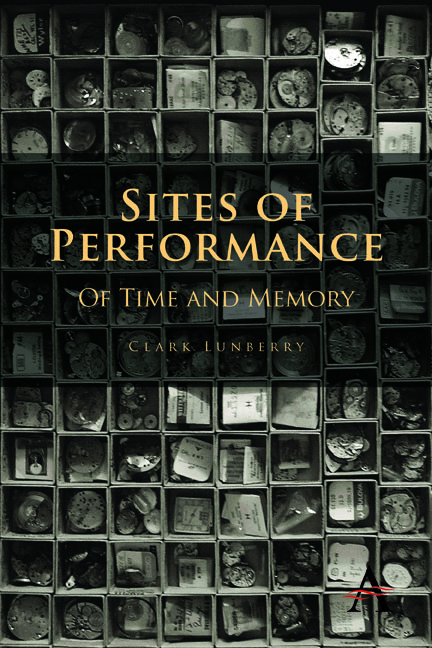Book contents
- Frontmatter
- Dedication
- Contents
- Acknowledgements
- Preface
- I Stagings: Plays of Space
- Chapter 1 A Body Bending: Removing the Boots of Beckett and Proust
- Chapter 2 (Silence): Scripting Absence
- Chapter 3 Blood on the Wall: The “True Tragic Pleasure” of Medea
- Chapter 4 Coriolanus in the Marketplace
- II Sightings: Sites of Time
- Bibliography
- Index
Chapter 2 - (Silence): Scripting Absence
from I - Stagings: Plays of Space
Published online by Cambridge University Press: 05 November 2014
- Frontmatter
- Dedication
- Contents
- Acknowledgements
- Preface
- I Stagings: Plays of Space
- Chapter 1 A Body Bending: Removing the Boots of Beckett and Proust
- Chapter 2 (Silence): Scripting Absence
- Chapter 3 Blood on the Wall: The “True Tragic Pleasure” of Medea
- Chapter 4 Coriolanus in the Marketplace
- II Sightings: Sites of Time
- Bibliography
- Index
Summary
The clock is set.
Our pages
burn themselves
as theater
awaiting an extinguishing
mist
I sang my name but it sounded strange
I sang the trace then
without a sound,
then erased it […]
—from Michael Palmer's “Sun”In the previous chapter, we examined the manner in which silence was situated upon the boots of Beckett and Proust, ordinary objects that had—over time, in time—restored a silence otherwise interrupted by the words of those wearing them. Such words, about to be spoken, were thus stalled or stymied by the emptiness arising from the boots of both, an absence encountered within and without. For at such a site, there proved to be “nothing to show” and so nothing to say. Nonetheless, something remained from such nothing, as if appearing from out of its own disappearance. There, suddenly seen, was a body bending, gesturing, a picture of longing and loss that told of time as an active agent of such vanishing. As an absence now before our silenced eyes, time's encrypted inscription is traced upon the body.
“(Silence)”
One notable way that silence manifests itself in theater is through the crafted applications of silence as the “silence” of a playwright's stage directions. Such directions, once written, shape themselves as an acted absence of language, a timed texture of a nothing said.
- Type
- Chapter
- Information
- Sites of PerformanceOf Time and Memory, pp. 15 - 24Publisher: Anthem PressPrint publication year: 2014



